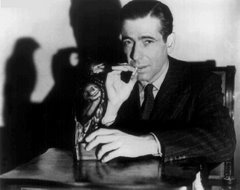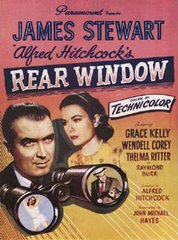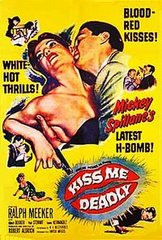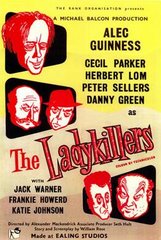- I've got my T.V. Pick of the Week up on the sidebar, and my choice this week was Medium's newest, "Mother's Little Helper." Patricia Arquette is a great and underrated actress and the show usually delivers solid, though sometimes predictable, horror/mystery. What makes each week so interesting, though, is the way the show plays with things like animation, music, sound, color, etc. The first episode of the season had Bridgette (Maria Lark), the middle sister aged somewhere around 10, having dreams like her mother, only in the form of a kid's cartoon. One of the most disturbing murders I've ever seen on network T.V. involved a cartoon monkey. This week's episode opens with what quickly becomes recognizable as a dream as we see Ariel (Sofia Vassilieva), Alison's (Patricia Arquette) oldest daughter, attending a dance with a cute boy and they are being called up as the dance king and queen. Slow-mo kicks at this point, as the kids and teachers cheer Ariel on to her triumph. It's unmistakably an allusion to Carrie (Brian DePalma, 1976). After the bucket of pig's blood drenches Ariel, she begins the anticipated telekinetic freak-out, and Alison wakes up from her nightmare obviously disturbed. Of course, Ariel is having the same dream, only in her dream, it's flower petals and not blood that fall from above. The gimmick of the show is that Alison can see dead people and has dreams that are communications from murder victims about how they died. The other gimmick is that her daughters (at least the two eldest), have the same abilities, only not as pronounced as their mother's. The DePalma/Carrie homage at the beginning was a cute, funny little joke about Alison's fears for her daughters and their (often unwanted) powers. What surprised me about the episode was that the opening wasn't just a minor cinematic joke, but a stylistic foreshadowing. Later, when both Alison and Ariel are having dreams of the double murder of a mother and daughter, Alison dreaming from the mother's perspective, and Ariel from the daughter's, we see the events in split screen -- that very signature style of Brian DePalma. The opening of the episode worked not only as a great character moment for Alison (how perfect that the fears of a Gen-Xer with a "gifted" teenage daughter would manifest themselves as a modified version of the signature scene from Carrie) -- as well as a set-up one of the story lines of the episode, Ariel's anxiety over the spring dance -- but it also foreshadowed the stylistic choice to show the audience the murders through split-screen. Overall, I guess I'm just a sucker for this type of cinematic in-joke. It was fun.
- I didn't pick the new episode of the The Office this week (for Pick of the Week) because The Office is so awesome week in and week out that I've just come to expect it and have ceased being "wowed" by its awesomeness. Does that make sense? (Although, being a JaMichael shipper, mon, almost pushed this episode to Best of the Week for me, and I loved Dwigt's tenderness with Pam.)
- Can't wait for new seasons of 24 and Rome! January 14, baby!
- This month on TCM, Jean Arthur is the featured star. I've loved her since I first saw You Can't Take It With You about ten years ago. But I was shocked, shocked! to find out recently that she was born in 1900! That would have made her 38 when she was in YCTIWY. I always thought she was probably early 20s in that film. Apparently not.
- I haven't seen The Good German yet, and I want to, but I remember reading some article online that mentioned Soderbergh's idea that The Good German would be the film Michael Curtiz would have made if he didn't have to worry about the Production Code (ah, here's where I read about that, not a direct quote unfortunately; scroll down to read the comment that mentions Soderbergh's idea re: Curtiz and the Code). But don't we already know what filmmakers of that era would have made without the Code?
- And since we're on the subject of the Hays Code, I watched The Miracle of Morgan's Creek this weekend and the dvd had a couple of documentaries, one about the movie and the Production Code. One of the commentators said that the Code was, in a way, a kind of form that directors had to adhere to, like the form of a sonnet, and that this form often made them think creatively and ended up enhancing their work. This is something I've often thought myself -- that rather than being limiting, the Code was a way for filmmakers to find creative answers to things they wanted to put in their movies. We certainly wouldn't have had some of the hilarity of Morgan's Creek without the Hays Code as comedic target. The Good German, from my reading of other critics, sounds like a poem with fourteen lines, just with the rhymes in all the wrong places.
Sunday, January 07, 2007
Odds and Sod's
Subscribe to:
Post Comments (Atom)



















3 comments:
I followed the links here from Edward Copeland's place, where I was enjoying your take on his Best/Worst Actress survey. This is a great place, and your spiffy graphics put mine to shame.
About the Code--I think it can definitely be argued that it led to certain kinds of creativity. The amazing variety of American slang that you find in a Golden Age picture is due in part to the ban on profanity. Making a clean-mouthed gangster or tough guy believable is its own kind of art.
The primary problem with the Code isn't so much the ban on depictions of sexuality, limiting though that was. No, to my mind the objection to the Code is its downright regressive politics. The ban on miscegenation, actual or depicted, for example, or the requirement that religious figures could not be depicted as corrupt nor the tenets of a church be questioned. That goes well beyond "decency" requirements and becomes a serious limitation on artistic freedom.
Of course the beauty of the Golden Age is how often the artists got the point across anyway (and how often the censors missed it, as with Morgan's Creek).
Anyway, hope you don't mind this rather lengthy drive-by. Come up some time and see me. :)
Thanks for stopping by!
I think I overstated my case a little bit re: The Code. I'm glad you mentioned the ban on miscegenation -- it's one thing to laugh at the ridiculousness of having twin beds for Nick and Nora Charles, but it's another thing entirely (bitterness? sadness? anger?) having to accept, say, Jeanne Crain as an African-American in Pinky.
I think what I was trying to get at is the paradox of the Hays Code -- that out of something generally considered bad for art (censorship), artists were able to produce so much that was good. Actually, I think this applies to art in general -- that restrictions/guidelines/rules force the artist to think more deeply about his art and therefore force him to find creative answers to these restrictions. It's the idea that great art arises out of tension and conflict. But again, I'm afraid I'm in danger of overstating my case. I guess I'll just say that not everything about the Code was bad -- censorship sucks, fo' sho', but great art can still be made. As you pointed out, one of the joys of watching old movies is being able to watch artists communicate their ideas despite the censorship.
Thanks for the great comment!
p.s. -- I'm adding you to our sidebar
thanks much, I shall do the same!
Post a Comment